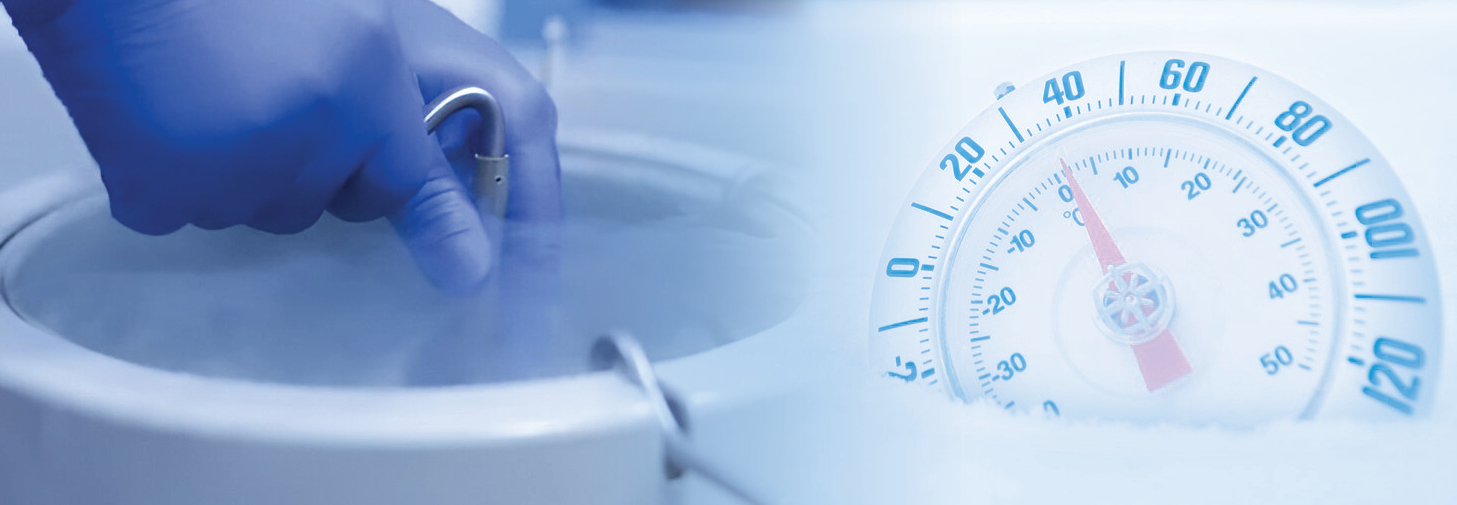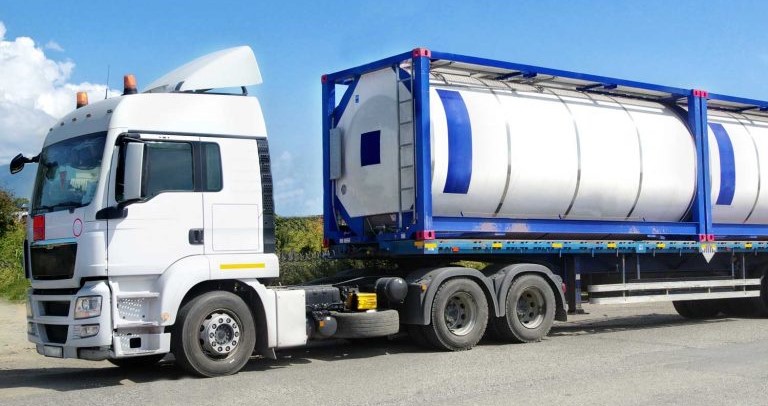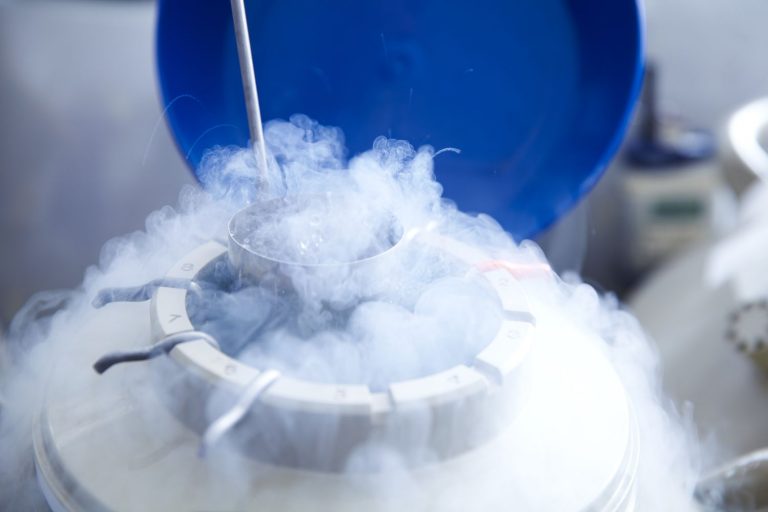#Cryogenics #Sub-zero #Storagetanks
Navigating the Sub-Zero World: The Role of Cryogenic Tanks in Modern Industries
In an age where technology pushes the boundaries of science and engineering, cryogenic tanks stand as silent sentinels in numerous industries. These specialized storage solutions are not just about holding ultra-cold substances—they are about maintaining the delicate balance between science and safety, between innovation and practicality. In this blog, we will explore the fascinating world of cryogenic tanks, their significance, applications, challenges, and how Hypro’s advanced solutions are redefining the standards in cryogenic storage.

Understanding the Cryogenic Conundrum: Why Cryogenic Tanks Matter
Cryogenic tanks are designed to store liquefied gases at extremely low temperatures—often below -150°C. The key to their importance lies in their ability to manage these ultra-low temperatures while preventing boil-off and ensuring the integrity of the stored substances. The cryogenic realm is a game-changer for several industries, including healthcare, energy, and food processing. These tanks serve as more than just storage units; they are critical for:
Ensuring Material Purity: Cryogenic fluids like liquid oxygen, nitrogen, and carbon dioxide must remain in a pristine state. Any contamination or temperature fluctuation could result in substantial losses or even dangerous situations.
Maintaining Safety Standards: The management of cryogenic substances requires adherence to rigorous safety standards. Properly designed tanks minimize risks associated with pressure build-ups, leaks, and temperature deviations.
Enabling Industrial Advancements: From facilitating cutting-edge research to enhancing energy efficiency, cryogenic tanks are foundational to many industrial innovations.
Diverse Applications: The Backbone of Various Sectors
Cryogenic tanks find their application in a myriad of fields, supporting processes that are both critical and complex.

1. Healthcare & Biotechnology
Hospitals and labs depend on cryogenic tanks for storing medical-grade oxygen and nitrogen. These gases are crucial for everything from respiratory therapy to cryo-preservation of biological samples such as stem cells and vaccines.

2. Food & Beverage

3. Aerospace & Defense
In the demanding environments of space exploration and defense, cryogenic tanks store liquid propellants such as liquid hydrogen and oxygen. They ensure fuel purity and stability under extreme conditions, which is essential for the success of space missions and defense systems.

4. Energy Sector
With the shift towards cleaner fuels, cryogenic tanks are crucial in storing and transporting LNG (Liquefied Natural Gas). The energy sector relies on these tanks to ensure the safe and efficient transport of LNG, a cleaner alternative to traditional fossil fuels..
Transportation Challenges: Beyond Just Moving Cryogenic Tanks
Transporting cryogenic fluids isn’t merely about moving tanks from point A to point B. The complexities involved are numerous:
Maintaining Ultra-Low Temperatures: Any increase in temperature can cause rapid evaporation of the cryogenic liquid, leading to product loss and potential hazards. This requires robust insulation and monitoring systems to keep temperatures stable during transit.

Handling Pressure Dynamics: During transportation, tanks are subject to various environmental changes that can cause pressure fluctuations. Cryogenic tanks must have advanced pressure management systems to handle such dynamics without compromising safety.
Regulatory Compliance: Different countries and regions have stringent regulations governing the transport of cryogenic substances. Compliance with standards such as the International Maritime Organization (IMO) and International Air Transport Association (IATA) is mandatory, requiring meticulous planning and documentation.
The Art and Science of Maintaining Sub-Zero Temperatures in Industrial Settings
For industries that operate on the razor’s edge of temperature control, maintaining cryogenic temperatures is both an art and a science. The challenges involved are multifaceted.
Minimizing Heat Ingress: Cryogenic tanks are engineered with multi-layer vacuum insulation to minimize any heat transfer from the outside environment. Even a small amount of heat ingress can lead to the vaporization of stored liquids, making insulation technology a critical focus area.

Automated Monitoring Systems: Advanced cryogenic tanks are integrated with real-time monitoring systems that track temperature, pressure, and liquid levels. These systems provide crucial data that help in maintaining operational safety and efficiency.
Proactive Maintenance and Upgrades: Ensuring that cryogenic storage solutions are operating optimally requires regular maintenance checks and, when necessary, system upgrades. This continuous improvement approach is essential for meeting evolving industrial demands and maintaining safety standards.
Hypro's Cryogenic Tanks: Redefining Excellence in Cryogenic Storage
At the forefront of cryogenic innovation, Hypro offers cutting-edge cryogenic tanks designed to tackle these challenges head-on. Our tanks are crafted to deliver not just storage for the O2, N2 and CO2 but an entire experience of reliability, safety, and efficiency. Here’s why Hypro’s cryogenic solutions are a class apart.
Range and Versatility: Offering a capacity range from 10 T to 100 T, Hypro’s cryogenic tanks cater to diverse industrial needs—from small-scale labs to large energy facilities.
Superior Build Quality: Made with high-quality SS 304 interiors, our tanks feature vacuum insulation technology that minimizes heat ingress and maintains stable cryogenic temperatures. This design ensures minimal product loss and maximized operational uptime.
Comprehensive Compliance: Designed as per AD 2000, EN 13458-1, and ASME standards, and certified by U / CE / PESO, our tanks meet and exceed global safety and quality standards, ensuring peace of mind for our customers.
Safety-First Features: Our tanks are equipped with pressure relief valves, rupture discs, and automated control systems to handle unexpected pressure surges and temperature fluctuations, reinforcing Hypro’s commitment to safety and reliability.
Tailored Solutions for Every Need: Hypro offers customized cryogenic solutions to meet the specific demands of various industries. Our expert team collaborates closely with clients to develop storage systems that deliver optimum performance.

Why Choose Hypro?
In a market saturated with options, Hypro’s cryogenic tanks stand out due to our relentless focus on quality, safety, and innovation. By choosing Hypro, you are not just purchasing a cryogenic tank—you are investing in a solution that integrates seamlessly into your operations, enhancing efficiency and safeguarding your assets. Moreover, Hypro’s tanks incorporate the latest advancements in cryogenic technology, ensuring you stay ahead of the curve. From initial consultation to installation and ongoing support, Hypro provides a full spectrum of services, ensuring your cryogenic needs are always met.
Cryogenic storage tanks are an essential component in the infrastructure of modern industries. The ability to safely store and transport cryogenic fluids at sub-zero temperatures is vital for sectors ranging from healthcare to energy. As industries continue to innovate and evolve, the demand for high-quality cryogenic solutions like those offered by Hypro will only increase. With a commitment to quality, safety, and customization, Hypro is your ideal partner for all your cryogenic storage needs.
Ready for a frosty discussion?
Related Posts
Environment First
On the World Environment Day, Hypro redefines the role of industry - not as a force that extracts, but as one that restores. With over...
Read MoreTurnkey Industrial Brewery
From bare land to brewing legacy — setting up an industrial brewery is more than installation. Hypro’s turnkey approach blends deep engineering with brewmaster intuition....
Read MoreEngineering Sustainability
Hypro believes Earth Day is more than a moment - it’s a mission. From sustainability-driven innovations to CO₂ recovery and digital transformation, discover how Hypro...
Read More



